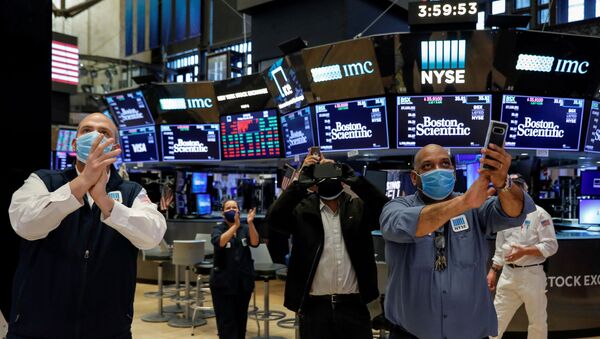At the closing bell, the Dow Jones Industrial Average index had rebounded and gained 157.62 points, hours after early trading saw the index plummet by more than 600 points. The S&P 500 jumped by 25.28 points, as the Nasdaq Composite closed in the green with a 137.21-point gain.
Stocks that led the downturn in early trading included travel companies Carnival Cruise Line, Royal Caribbean International, American Airlines, United Airlines and retailers Kohl’s and Gap. Such companies had previously seen the value of their stocks make some gains on investor predictions of a quick economic recovery.
The sudden shift from red territory came after the US Federal Reserve announced it was going to start buying up individual corporate bonds in an effort to help the US market amid the COVID-19 pandemic.
“We’re in the midst of a correction,” Peter Cardillo, a chief market economist at investment company Spartan Capital Securities, told CNBC. “The coronavirus is spiking again, and that’s a problem. There was also over-exuberance in the market. The market was discounting a quicker economic rebound.”
Monday’s closing figures come after the Dow took a massive nosedive on Friday. The index fell over 1,800 points into red territory when reports detailing a nationwide spike in COVID-19 cases in the US prompted concerns of a second wave of the disease.
Elsewhere, European and Asian markets suffered, with global trading floors experiencing losses over the fears of a possible COVID-19 resurgence. Although some indices were able to pare early losses, the same could not be said for Japan’s Nikkei 225 index or Hong Kong’s Hang Seng index, which plunged by 774.53 points and 524.43 points, respectively.
New Coronavirus Cases Emerge
With the US COVID-19 count now exceeding 2 million documented cases, health care workers have continued to record surges in 21 US states, including Florida, Alabama, South Carolina, Arkansas, Oregon, Arizona and California.
According to the Washington Post, Alabama reported a 92% change in its seven-day case average, and Oregon reported a 83.8% spike. However, in terms of hospitalization rates, the state of Arkansas takes the cake, as experts have recorded a 120.7% increase since May 25.
The US’ recent spike comes amid China’s newly imposed measures to combat a coronavirus resurgence in the country’s capital. On Monday, Chinese authorities reported 49 new COVID-19 cases in Beijing after having placed several residential complexes on lockdown. Prior to the recent cases, Beijing hadn’t reported a single COVID-19 case for the past 50 days.
Edward Park, deputy chief investment officer at London-based management firm Brooks Macdonald, told the Wall Street Journal that the current situation suggests that authorities need to pick between avoiding a hit to public health or to the economy.
“The timeline for the virus is being extended,” he said.

